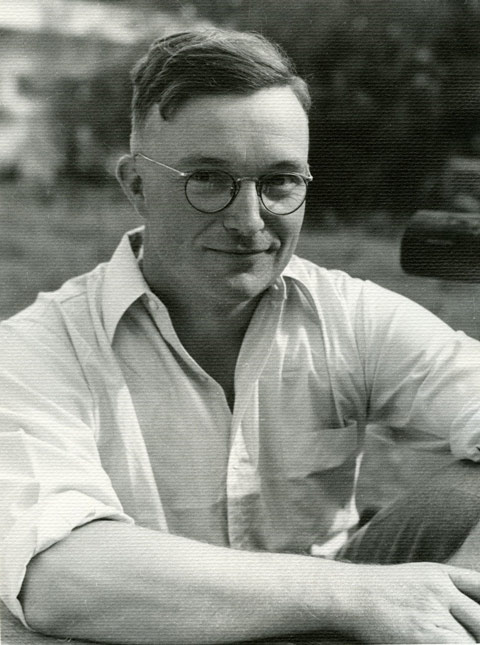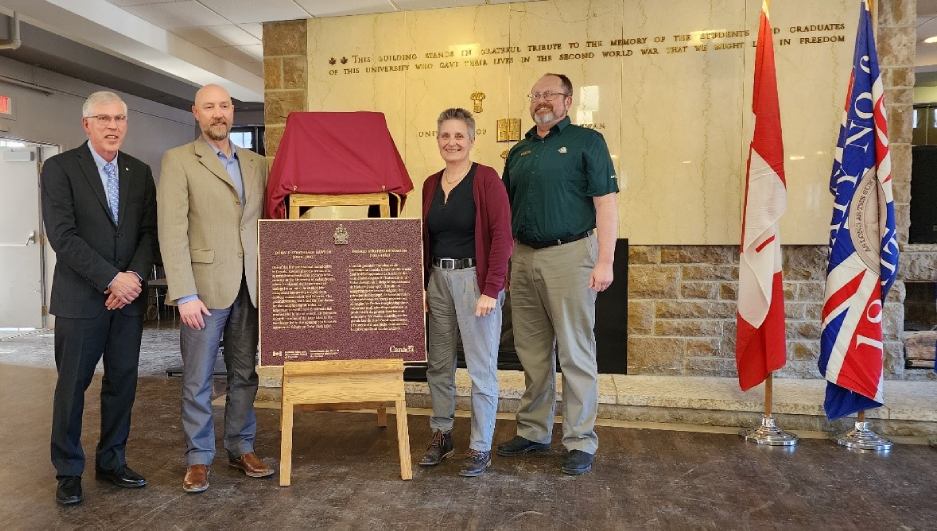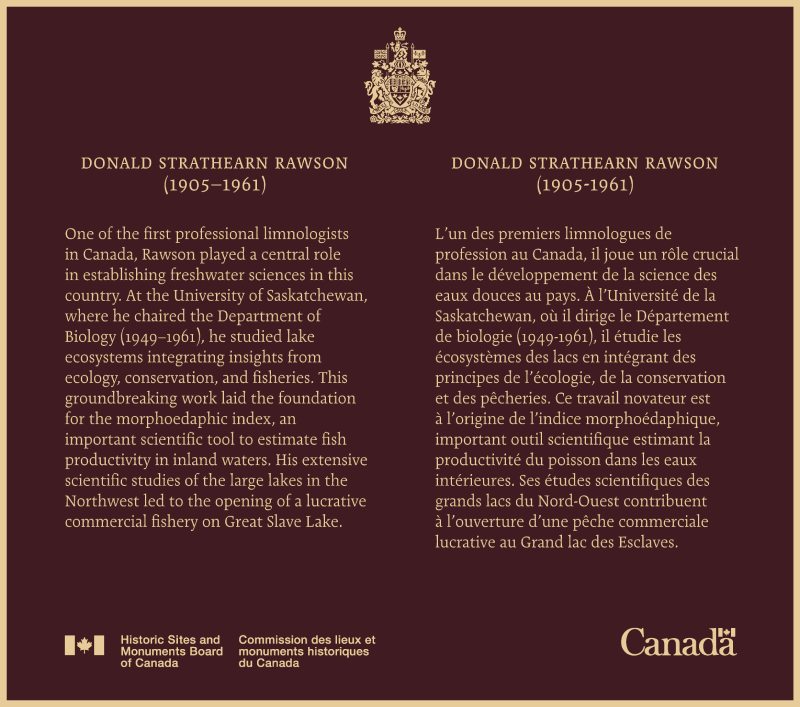Donald Strathearn Rawson National Historic Person (1905–1961)

© University of Saskatchewan, University Archives & Special Collections, Photograph Collection, A-3380.
Donald Strathearn Rawson was designated as a national historic person in 2019.
Historical importance: Pioneer professional limnologist in Western Canada, he performed scientific studies of inland aquatic ecosystems, including the first extensive scientific studies of the large lakes of the Northwest.
Commemorative plaque: University of Saskatchewan, 112 Science Place, Saskatoon, SaskatchewanFootnote 1
Donald Strathearn Rawson (1905–1961)
One of the first professional limnologists in Canada, Rawson played a central role in establishing freshwater sciences in this country. At the University of Saskatchewan, where he chaired the Department of Biology (1949–1961), he studied lake ecosystems integrating insights from ecology, conservation, and fisheries. This groundbreaking work laid the foundation for the morphoedaphic index, an important scientific tool to estimate fish productivity in inland waters. His extensive scientific studies of the large lakes in the Northwest led to the opening of a lucrative commercial fishery on Great Slave Lake.
Donald Strathearn Rawson (1905–1961)
Donald Strathearn Rawson was a pioneering professional limnologist in western Canada in the first half of the 20th century. He conducted scientific studies of inland aquatic ecosystems, including the first extensive studies of the large lakes of the northwest, including Great Slave Lake and Lake Athabasca. His limnological research on Great Slave Lake led to its classification as a body of water of comparable production to the upper Great Lakes, and to the establishment of a lucrative commercial fishery there in 1945. Through his research, principally his holistic limnological chart titled “Trophic Nature of the Lake,” Rawson helped scientists understand the interrelated factors that determine a lake’s productivity levels (the amount of algae, aquatic plants, and animal life that a lake can support). This led to the development by others of the “morphoedaphic index” (MEI), a widely used tool providing limnologists with a means of predicting a lake’s productivity that balances the effects of shape and mineral content of the lake’s basin.

Left to right: Bill Waiser, Saskatchewan Historic Sites and Monuments Board of Canada Representative; Dr. Chris Todd (PhD), head of the Biology Department, University of Saskatchewan; Dr. Peta Bonham-Smith (PhD), dean of College of Arts and Sciences; and Scott Whiting, External Relations Manager, Parks Canada Saskatchewan South Field Unit
Rawson was born near Uxbridge, Ontario, and educated in biology at the University of Toronto, where he specialized in the emerging field of limnology. In 1928, he joined the biology department at the University of Saskatchewan, which he led as department chair from 1949 to 1961. Saskatchewan’s Fisheries Branch sponsored Rawson’s work for more than a decade, establishing a Fisheries Laboratory at the University of Saskatchewan’s Department of Biology, with Rawson at its head from 1948 to 1960. Rawson operated in the nexus between limnology, conservation, and the study and management of fisheries, writing scientific reports that also detailed the potential productivity of lakes for commercial fisheries. As an early Canadian limnologist, Rawson contributed to the growth of this relatively new scientific field, advancing Canadian science at the national and international levels.

Between 1928 and 1935, he conducted pioneering studies on lakes and fisheries in Prince Albert National Park (Saskatchewan) and Riding Mountain National Park (Manitoba). He adopted a novel and holistic (all-inclusive, universal) approach to limnological studies of lakes, involving an interdependence of factors such as human impact, edaphic conditions (soil factors and how they affect living organisms), the shape of a lake’s basin, and climate, leading to a better understanding of lake productivity and fisheries potential.
In recognition of his contributions to scientific research and conservation, Rawson was elected a Fellow of the Royal Society of Canada (1944) and made a member of the Fisheries Research Board of Canada (1959-61). He also served on the Royal Commission on the Fisheries of Saskatchewan (1946-47), was president of the Canadian Committee for Freshwater Fisheries Research (1951), and the Limnological Society of America (1947), the international limnological organization. In addition, he helped found the Canadian Society of Wildlife and Fishery Biologists in 1958 (now known as the Canadian Society of Environmental Biologists), an organization dedicated to research and conservation of natural resources.
Backgrounder last update: 2023-02-21
The National Program of Historical Commemoration relies on the participation of Canadians in the identification of places, events and persons of national historic significance. Any member of the public can nominate a topic for consideration by the Historic Sites and Monuments Board of Canada.
- Date modified :